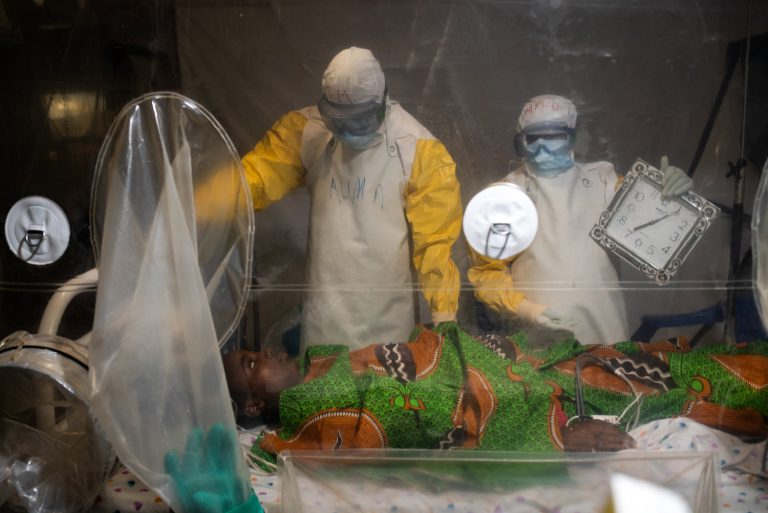Photo by Nichole Sobecki / VII. Sixteen-year-old Kavugho Mukoni Romelie is being treated for Ebola at the ALIMA (The Alliance for International Medical Action) center in Beni, DRC, on February 26, 2019. Her treatment takes place inside one of ALIMA’s Biosecure Emergency Care Units, known as “cubes” — a recent advancement in technology to treat the virus. The rooms, made of clear, flexible plastic with sleeves, gloves and bodysuits built into the walls, allow nurses to safely perform about 80 percent of the care an Ebola patient needs without having to put on hot, cumbersome gowns, hoods, rubber aprons, boots and goggles.
This live event is on April 29 at 16:00 CET/10:00 EDT.
To show the effects of infectious diseases to the world, photographers have been among those in close proximity to outbreaks. As the number of coronavirus cases continues to rise globally, and the year-and-a-half-long Ebola outbreak in the Democratic Republic of Congo finally comes to a close, covering these health emergencies is both essential and dangerous. From the practical to the conceptual, can we as photographers tell these stories, drive impact, and minimize risk both for ourselves and our subjects? We welcome guest expert Dr. Jenell Stewart, Infectious Diseases fellow at the University of Washington, to join photographer Nichole Sobecki on this discussion.
Subscribe to our mailing list to get access to this free live event.
powered by Typeform
